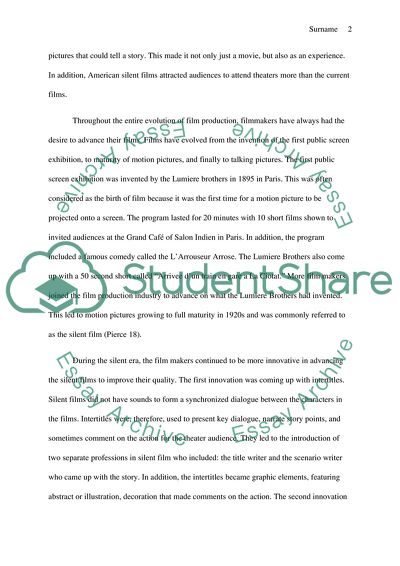Cite this document
(American Silent Film Essay Example | Topics and Well Written Essays - 2000 words, n.d.)
American Silent Film Essay Example | Topics and Well Written Essays - 2000 words. https://studentshare.org/visual-arts-film-studies/1857574-why-were-american-silent-films-perished
American Silent Film Essay Example | Topics and Well Written Essays - 2000 words. https://studentshare.org/visual-arts-film-studies/1857574-why-were-american-silent-films-perished
(American Silent Film Essay Example | Topics and Well Written Essays - 2000 Words)
American Silent Film Essay Example | Topics and Well Written Essays - 2000 Words. https://studentshare.org/visual-arts-film-studies/1857574-why-were-american-silent-films-perished.
American Silent Film Essay Example | Topics and Well Written Essays - 2000 Words. https://studentshare.org/visual-arts-film-studies/1857574-why-were-american-silent-films-perished.
“American Silent Film Essay Example | Topics and Well Written Essays - 2000 Words”. https://studentshare.org/visual-arts-film-studies/1857574-why-were-american-silent-films-perished.


